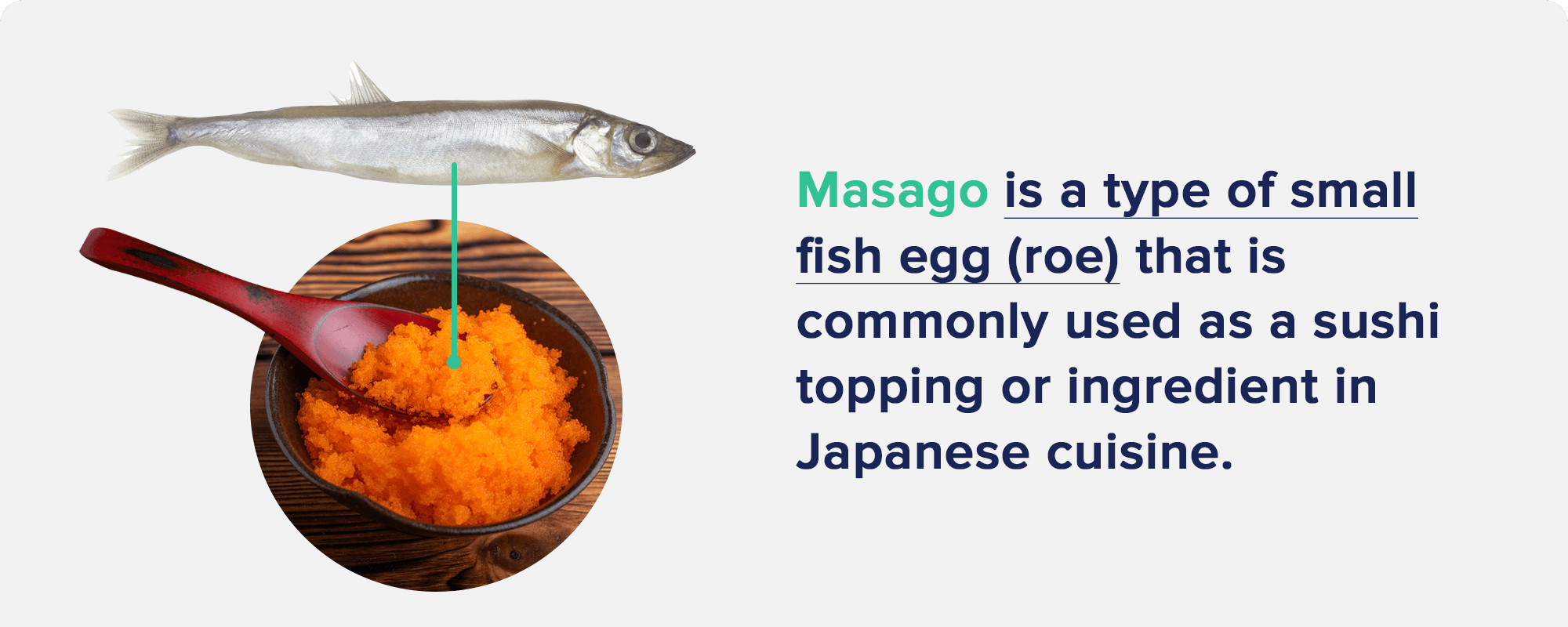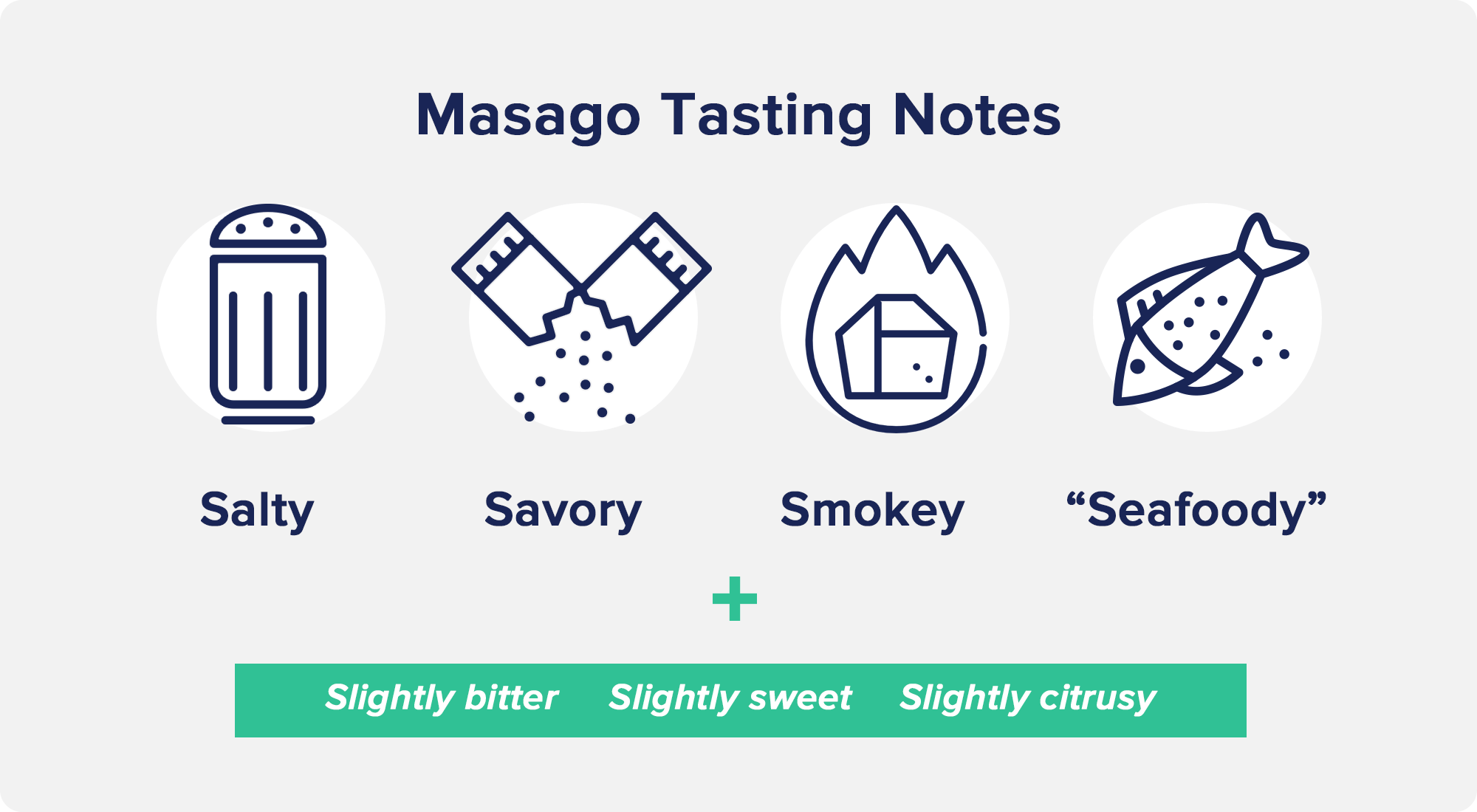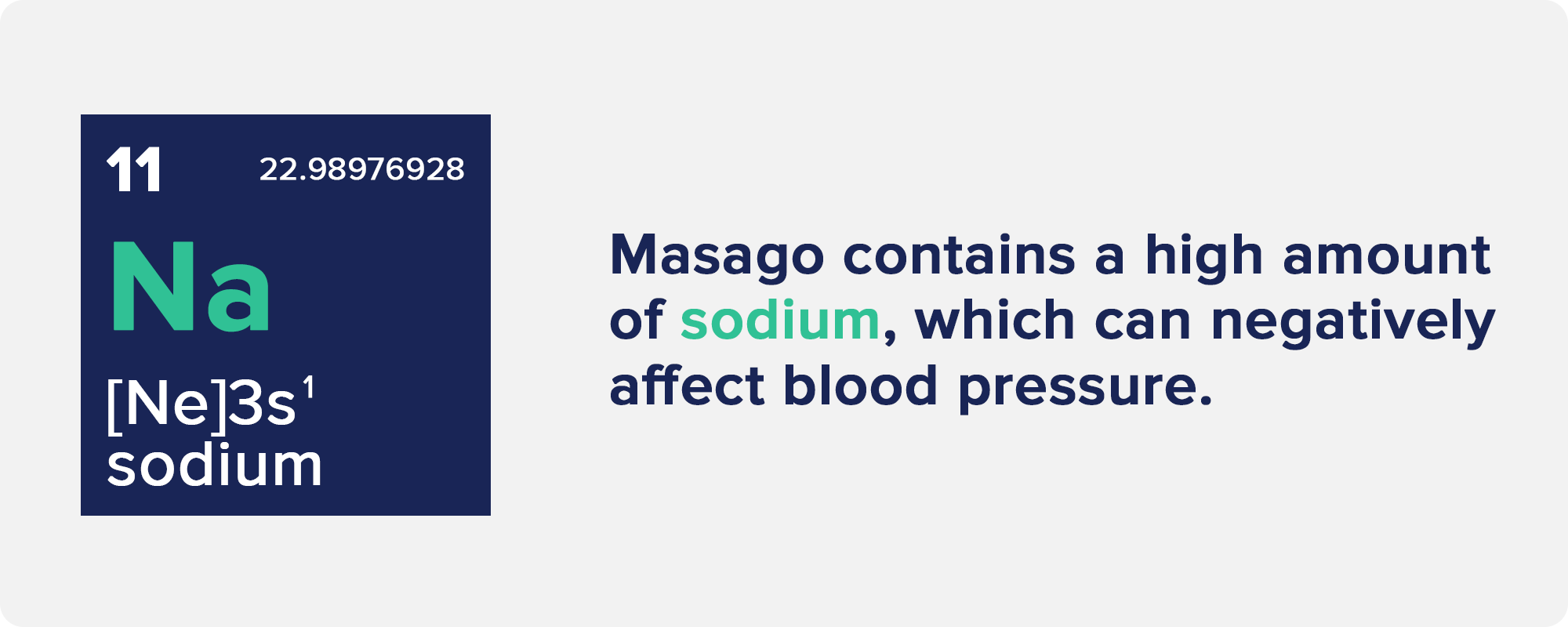Talk to a Registered Dietitian and use INSIDER20 for 20% off!
Talk to a real Dietitian for only $99: Schedule Now
Evidence Based Research To fulfill our commitment to bringing our audience accurate and insightful content, our expert writers and medical reviewers rely on carefully curated research.
Read Our Editorial Policy
Think of masago as less pretentious caviar.
Where classic sturgeon-based caviar conjures in many of us an image of fat cats standing around and discussing their latest ventures at some bourgeois party, masago typically has more humble (and affordable) applications.
But what is this stuff exactly, how does it differ from “standard” caviar, and is it decently nutritious or not so much?
We’ll explore all of these key questions in this guide to all things masago—no monocles or weird mustaches required.
Masago is the eggs, or roe, of the capelin fish, a small fish species belonging to the smelt family that mostly inhabits the Atlantic, Pacific, and Arctic Oceans.
Masago and other forms of smelt roe are almost always served raw and fully ripened.

Though it’s present throughout Japanese cuisine in the form of various seafood dishes, masago is prevalently found in sushi.
It depends on where you live and how much (if any) you know about sushi, but most Westerners are more accustomed to seeing their delicious morsels of fish and rice encircled by thin sheets of seaweed (nori).
However, in Japan and elsewhere, you may also see the outside of your roll stippled with almost microscopically small, orange orbs—that’s masago sushi.
In addition to sushi, this fairly versatile food is included in sauces, noodle dishes (especially udon), seafood dishes, and more.

If you have the opportunity to try masago by itself, so as not to adulterate its true flavor with other fixins, your palate will pick up some mixture of the following flavors:
As you might guess by looking at them (and knowing what they are), these tiny eggs have a snap to them, but not to the point of a strong crunch—think miniature boba.
We definitely wouldn’t recommend masago to anyone averse to the “seafood taste,” although certain preparations (like a sweeter sauce) may be more approachable in this case.
And though the Japanese and others across the globe love their masago for its unique flavor, many also turn to capelin roe for its pretty solid nutritional value.
Having garnered a keen sense of the nutrition facts from several different sources, we’ve settled on the USDA fish roe nutritional data because it inhabits a comfortable middle for most of masago’s nutrients.
Speaking of “comfortable middles,” a single tablespoon (14 grams) of masago provides a fairly lean 20 calories.
Here are a few more of the key nutrition facts for masago (all based on a one-tablespoon serving):
Masago also contains magnesium, iron, vitamin D, riboflavin, pantothenic acid, phosphorous, and more than 50% of your daily value of vitamin B12.
Needless to say, these little eggs actually make a strong argument for nutritional value, offering a low-calorie, high-protein shot of vitamin B12, iron, and several other key nutrients.
It also helps that, like many seafood dishes, the kind of fat in masago is rich with omega-3 fatty acids. This guide to omega-6and omega-3 fatty acids explains why our typically omega-6-rich diets are in dire need of more omega-3s.
Finally, if you’re weary about mercury, the American Pregnancy Association says pregnant women can have up to two 6-oz servings a week of masago, which mostly eat plankton and are thus lower in mercury than many other seafood entrees.
However, it’s not necessarily all good.
As we listed above, masago definitely packs some sodium (salty fish eggs—surprise). Whether you actively struggle with high blood pressure or are looking to prevent it, keeping sodium intake at a reasonable level is key to optimizing blood pressure.

If you’re keeping it to a fairly small serving—which is commonplace with masago anyway—you can certainly keep the sodium to around 500 milligrams or less, about 21% of the daily recommended intake.
However, just one masago sushi roll is probably going to surpass this, let alone two.
Another con against masago and some other forms of caviar is the environmental concern; capelin (a forage fish) has decreased dramatically over the past decade.
Still, on a nutritional level, masago is a net positive for those who can “budget” for the higher sodium content.
Of course, this is assuming it doesn’t come as part of a sodium-packed (or otherwise unhealthy) dish.
Yes. Just like other types of fish roe, masago is the fully ripened eggs of a fish species called capelin.
Masago is not made from the meat of a fish, but rather, the raw, fully ripened eggs of the capelin fish.
Being relatively low in calories and high in protein and B vitamins, masago is well-suited to most weight loss diets.
As usual, context matters—consuming too much masago and/or pairing it with highly caloric and unhealthy foods will likely negate any weight loss benefits.
Also, as masago is usually consumed in smaller amounts and in a limited range of dishes, it’s not the most practical substitute for most unhealthy foods.
It depends on your standard, but most sources agree that masago is moderately nutritious, thanks to its generous protein, B vitamin, and healthy fat content, to name a few key nutrients.
However, masago is relatively high in sodium—containing roughly 240 mg per tablespoon—which can add up quickly in the case of masago sushi especially.
Die-hard caviar purists may point out a large list of differences, but for the rest of us, masago is considered “caviar-adjacent” in its texture and flavor.
Both caviar and masago are often described as salty and smoky.
Still, masago is usually said to have a more varied flavor profile, with words like “bitter” and “citrusy” often added on to the description of its unique taste.
Masago is ripened fish eggs from a species of fish called capelin.
This food is popular in Japan and much of Asia, and is used both in sushi and a variety of other dishes and ingredients (sauces, other seafood dishes, etc.).
Somewhat akin to standard caviar in flavor, masago is salty, savory, smoky, and bitter, to name some of the most common descriptors.
Masago is fairly nutritious, providing generous amounts of protein, vitamin B, healthy fats (omega-3s), and several other nutrients while maintaining a low caloric density.
However, masago is relatively high in sodium, so keep that in mind if you’re indulging in more than a serving.
We consider masago to be a solid diet food that beats many others on the ratio of calories to nutritional density. If you’re not afraid of a bit of seafood, give this delicacy a try!